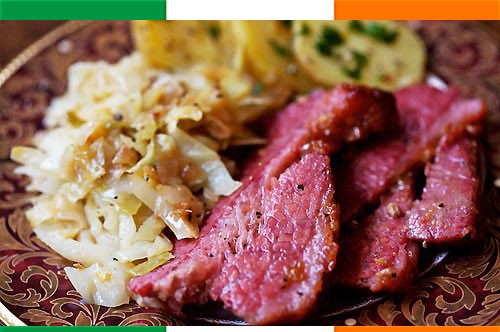
St. Patty’s is also about pinches and copious amounts of Guinness and Jameson but that’s not what I’m going to talk about today. We’re here to take a closer look at what’s considered, by most, to be the standard fare of St. Patrick’s Day, corned beef and cabbage. A lot of the best foods came about out of necessity (think chaucuterie or anything out of this book). The lack of refrigeration meant that a lot of people were getting creative with their meat preservation techniques. The term “corning” came about because the rock salt that was used to wet-cure (like some hams) the meat were similar in size and shape to kernels of corn (“corn” comes from an old Germanic word “kurnam” which was used to refer to anything small and seed-like). Beef that was cooked in this fashion soon became known as “corned beef”
But is it really Irish?
Yeah it’s pretty Irish. The city of Cork, Ireland produces a lot of the country’s corned beef and while people who live in the corned beef producing areas do consume corned beef, most of it is produced for the tourist trade. It wasn’t until Irish immigrants came to America that the mass consumption of corned beef (which was actually Jewish cured brisket) became the norm. Irish immigrants soon found that the high priced (most of the Irish beef of that era was being exported) corned beef of their homeland was now available to them on the cheap.
But why cabbage?
For the same reason college kids survive on Top Ramen. It’s affordable and tasty. Immigrants of that time were low-wage laborers who were looking to escape the potato famine in Ireland. Green cabbage (and potatoes) were reasonably priced, filled the belly and were nutritious (that last bit there is where the top ramen similarities end).
The Wooden Table has a chunk of fine looking brisket corning away at this very moment and we can’t wait to celebrate the plight of the working man come supper time. Sláinte!
